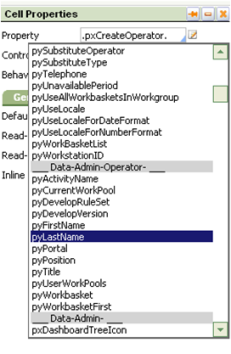Introducing PRPC 6.2 SP2 - Performance
 In many scenarios, V6.2SP2 executes rules faster than any previous V6.X release. Improvements are present throughout the product, and affect browser, network, server, and database operations. With few exceptions, all these performance enhancements are automatic, requiring no change to your existing applications or development approaches.
In many scenarios, V6.2SP2 executes rules faster than any previous V6.X release. Improvements are present throughout the product, and affect browser, network, server, and database operations. With few exceptions, all these performance enhancements are automatic, requiring no change to your existing applications or development approaches.
JavaScript
The quantity (in bytes) of JavaScript sent to the user browser is reduced for several common user iterations. Reductions range up to 50% compared to V6.2SP1.
 Linked Properties
Linked Properties
Harness, section, and flow actions in your application can display read-only values from Operator ID instances, access groups, workbaskets, work groups, and Organization instances using linked properties. For example, a user form can include the last name (pyLastName) of the create operator.
Special clipboard pages to support the display are created automatically upon first use and are cached to eliminate unnecessary database accesses.
See Use linked properties to display data from related objects.
JavaScript bundles in harness rules
 Using a Static Content rule, you can group multiple JavaScript files into a single consolidated "bundle". On the Scripts and Styles tab of the Harness form, you can cause the entire bundle to be sent to the user's browser all at once, eliminating the delay and overhead that would be required for multiple HTTP requests.
Using a Static Content rule, you can group multiple JavaScript files into a single consolidated "bundle". On the Scripts and Styles tab of the Harness form, you can cause the entire bundle to be sent to the user's browser all at once, eliminating the delay and overhead that would be required for multiple HTTP requests.
Startup performance
Certain caches are partially pre-loaded during system startup, to improve response time during initial use.
Previous topic Ten best practices for successful performance load testing Next topic Best practices for starting and stopping nodes in a Pega cluster
